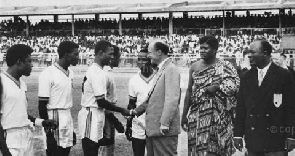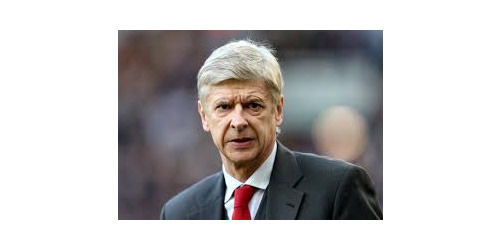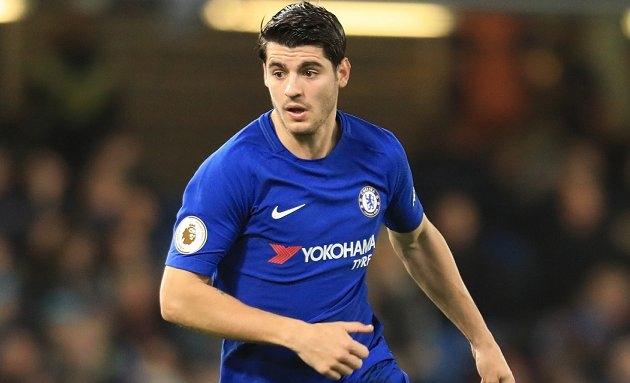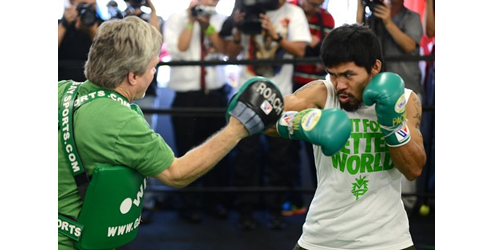India 99-1 Ghana: The Complete Story of the Mythical 1963 Epic Match

Many Ghanaian men and women and kids who were born in the 70s, 80s, early 90s, and even later years have most certainly heard of the legendary international football game between India and Ghana where the Indians beat their African opponents by 99 goals to one.
It is said that the Indians scored from almost every position on the pitch; yet, at the end of the match, the Ghanaians were awarded the trophy after having suffered such an embarrassing defeat.
But why would the Black Stars instead be awarded the trophy if the Blue Tigers were the ones who won the match in terms of scoreline? Furthermore, who really is the hero who scored the only goal for the shivering West Africans on that cold night in Mumbai—was it Baba Yara or Wilberforce Mfum?
Seeing that many discrepant stories surround this awe-inspiring sporting event that the Ghanaian folk cherish so much (Nigerians have made several unsuccessful attempts to steal the story), the author resolved to trace all things from the start with accuracy.
In doing so, he determined not to leave any stone unturned but present all the facts so that all may know the certainty of the things that they have only been informed orally.
The research was thorough so this compilation deserves full credence. But before you continue, Mr. and Mrs. Curious Kurt, do keep this John F. Kennedy quote in mind: “The great enemy of truth is very often not the lie . . . but the myth—persistent, persuasive, and unrealistic.” Now hop aboard the coaster wagon and let’s roll. Yee-ha!
The invitation—How there came to be such match
In December 1962, after China had indisputably defeated India in the Sino-Indian War, six nations met in Sri Lanka to discuss how to permanently resolve the lingering resentment between the two nations.
Among the attendees was Ghana. Those who met, however, failed to univocally condemn the wrong deeds of China. This enraged Jawaharlal Nehru, the then prime minister of India, very much.
After the conference, he called aside Kwame Nkrumah and made known to him what Mao Zedong, the then governor of the People’s Republic of China, had said: “The way to world conquest lies through Havana, Accra, and Calcutta.” This made Nkrumah grow fearful and so decided to seek alliances for protection although Chairman Mao had himself pronounced peace with Ghana.
Soon after Nkrumah arrived in his home country, he received a letter from Nehru compelling him to publicly decry the actions of Mao. Doctor Nkrumah, a man whose dream was to establish peace and cordial relationship among all nations, responded with kind and friendly words but firmly and plainly refused to grant the prime minister’s request.
Nehru got angry. But considering that he had just lost over 3,000 soldiers in the Sino war, he was unwilling to wage war against Ghana also.
So in an attempt to take revenge on the country, he sent a second letter, this time, proposing peace between India and Ghana by engaging in an international football friendly match.
Three days later, in February 1963, an Indian delegate arrived in Accra and were right away taken to the office of the President. There they revealed a written proposal that Nkrumah must sign to officially accept the match.
The President informed the Director of Sports, Ohene Djan, about the proposal but the director suggested that the proposal be declined since the team would be too busy in preparation for the 1963 Cup of Nations.
One Indian official then said that even if Ghana should score a single goal, they would be declared winners. This statement got Nkrumah suspicious so he asked to be excused. But before he left, the Indians threatened of famine should he fail to sign.
The President hurried off to see Kankan Nyame (a goddess that he had imported from Guinea about a decade prior) to inquire about the matter. She decreed that Ghana accepts the agreement.
But that was not all. The female deity also asserted that if Nkrumah fails to put his signature on paper by 12 o’clock noon that day, a great famine would strike the whole country. Nkrumah became very upset about this prediction so he ran back to where the Indian envoys were waiting.
When he got there and looked at the golden wall clock that he had received as a gift from Egypt, the time was already past noon—at 12:01 PM. That is why there was famine in Ghana exactly 20 years later in 1983 just as the Indians had threatened.[2] The friendly was then scheduled for February 29.
The matchday—From the 1st to the 90th minute
Finally, the day arrived for the match. The Mumbai stadium was packed to capacity with no space left even for the tiniest ant in the world to stand. It is said that even some Indians were sitting on top of their fellow countrymen’s heads. Clearly, then, the fans were very much geared up for the match.
However, no cameras were allowed to operate inside the stadium. In fact, those who were able to sneak in their cameras realized that they failed to work when directed toward the pitch, but when you turn the lens away from the field, then images could be captured. This made it impossible for anyone to capture the match. That is why there is no footage of the match anywhere.
When the Ghanaians got onto the field of play, they realized that the Indian players were no where to be found.[3] So Team Manager Kwabena Hagan went to the match commissioner to ask of where their opponents could be.
The commissioner directed him to the referee on the pitch. When he got there—before he could say a word—the referee gave a sinister kinda smile which discombobulated all those who saw it.
(The referee was one-eyed.) Then while everyone was looking on, he brought out of his hip (back) pocket a very small Guinness bottle and placed it at the center circle.
Then, to the greatest stupefaction of the Ghanaian players and officials but the admiration of all the Indians, look! here the Indian players were coming out of that small Guinness bottle one by one.
The Stars lost the pre-game coin toss so they were accordingly awarded kick-off. But when the ball was placed at the center spot, it all of a sudden became so heavy that none of the Ghanaian players was able to move the ball.
The referee therefore decided that the Indians should rather go first. So the Indian team captain came and stood by the ball. Immediately the referee whistled, he kicked the ball straight to the Ghanaian goal.
However, the Ghanaian keeper was then lacing his “kambou” so that he did not see the ball; and it entered the goal. Thus the Indians went up one goal to nil the very first second of the match, in the first minute, in the first half. What a first goal!
The ball was placed at the center of the pitch once again. This time around, the ball did not become heavy so the Ghanaians were able to kick it. Because they were a lot more skillful than the Indians, the Ghanaians quickly dribbled their opponents and soon they had reached the inside of the penalty box.
But when Baba Yara raised up his head, the goalkeeper had turned into a “kaakaamotobi.” As if that was not enough, the goal (that is, the physical structure made up of the goal posts, crossbar, and net) had also vanished.
Undeterred, he decided to kick the ball anyway, not fearing any possible hostile consequence, but look! it had turned into a “dadesen”! Upon seeing all of this, fear gripped him so much that he fainted and gave away possession.
But as soon as the Indians took possession, the ball returned to its normal state. Then their captain again hit a long shot toward the Ghanaian goal. This time Ali Jarrah was alert and he was ready to make an easy catch.
However, when the ball got close to him, it split into several other balls so that he was confused as to which one of the balls to catch. Worse still, each of the balls had a blazing flame of fire around it as they were all rushing furiously from different angles towards the goal.
Yet resolute, when he attempted to catch one of the many fiery balls, it turned out that instead one among those that he had ignored was the “real” ball so it entered the net. All of this happened but no one—except the goalkeeper—saw it. Thus the Blue Tigers scored their second goal.
That is what continued to take place. Every time the Ghanaians had an opportunity to take a shot at goal, the Indian goalkeeper would turn into a “kaakaamotobi,” the Indian goal would disappear, and the ball would transmogrify into a large and heavy “dadesen” so that they were not able to kick it. However, immediately the Indians had possession, the ball would return to its normal state so that they were able to play.
Moreover, whenever the Indians would make any of their long, powerful shots toward the Ghanaian goal (which they did 99 times throughout the match), the ball would split into many other fiery balls, or sometimes metamorphose into a fearful lion, so that Ali Jarrah would run away from between the posts and the ball would land into the unguarded goal.
When the 90th minute arrived, the Indians were leading 99 goals to nil. Then out of the blue Ghana won a penalty. What?! The players had resolved not to interfere with this Indian business but then someone had to definitely take the penalty. Wilberforce Mfum elected himself to do so despite the ball having transfigured into a very large Homowo “dadesen” for all to see.
So swinging back his long right limb, Mfum hit the ball with all his might regardless of the possible fatal consequence. The Indians were astonished that such bravery could be displayed by the Asante Kotoko striker.
Because of the force with which the “dadesen” ball was kicked, it swiftly passed the “kaakaamotobi” goalkeeper and the goal became visible again just before the “dadesen” reached the goal line. G
oooaaal! Ghana had scored the winning goal! To top that up, because of the magnitude of the “dadesen” combined with the speed with which it was traveling, the goal net was completely torn apart.
Thus the Ghanaian folk came to have the popular Akan saying, “Mfum atete net,” which means, “Mfum has torn apart [the] net.” What a grand victory this was for the African continent!
The aftermath—What happened to those heroes
Baba Yara, as a result of his heroic display on that night in the Indian capital, signed a contract with Nestlé Ghana Limited upon the Stars arrival in the country.
The complete terms of the contract are largely unknown but part of it stipulated that Baba Yara’s photo be featured on all Milo “nkyensee” (or “konko,” which translates to, “can” or “tin”) that are yet to be merchandised. Nonetheless, as soon as those “Baba Yara Milo” appeared on the market, sales figures sharply dropped for the food producing company.
The reason for this perplexing development is not entirely known but what is known is this: Baba Yara became the first footballer to be featured on Milo “nkyensee.” Nestlé, however, would later annul the contract and take Baba’s smiling face off the product.
Wilberforce Kwadwo Mfum, on his part, had a different fate—he became enviously successful, as it were, in his football career. The lord of the night became the first Ghanaian player to score at the African Nations Cup tournament when he opened the score in the 9th minute against Tunisia in the 1963 edition of the competition.
Soon, Mfum crossed the Atlantic Ocean to play for Baltimore Bays in Maryland, USA. He would later also play for Ukrainian SC, Ukrainian Nationals, and New York Cosmos.
However, in December 2013, 77-year-old Mfum expressed grief over unpaid bonuses that Nkrumah promised them if they won the trophy for the match. He was quoted as follows:
I have done my part for the nation and my reward has become a big problem. We were all promised to be rewarded after we won the trophy but that has never happened till date. Sometimes I wish I wasn’t even Ghanaian.
Our reward was just about GH50,000 which could have built me a chamber and hall self contained but here I am now without anything from all the sacrifices I made for mother Ghana and it has really made me sad just like my other colleagues.
Okay, what about the Indians? Well, because of the gross cheating mechanism that they employed, they were shortly summoned before the judicial committee of FIFA to defend several allegations of wrongdoing.
After investigating the matter, the football governing body banned them for life from all football activities.
However, after serving the ban for some years, the restriction was revoked and their eligibility to participate in international football was restored; but on condition that they would swear under oath never to play with juju again.
That is why India have never participated at the World Cup before; without juju they cannot progress from the qualifiers.
Despite having considered the details of the account above, there are yet some pressing questions left unanswered. A few among such are the following: Ali Jarrah was a member of the Black Starlets squad that claimed silver medals at the FIFA U-17 tournament in Japan ’93, so how is it that he was the goalkeeper of the senior national team 30 years prior? Also, this historic event is said to have occurred on February 29, 1963.
However, it is puzzling as to which calendar system this date is based on, since the widely used Gregorian calendar does not have February 29 in the non-leap year 1963.
Could it be that it was based on the Nkrumah Calendar? Anyway, let us not think more of this folktale than it is necessary; for happy, they say, are those who have not seen and yet believe.





